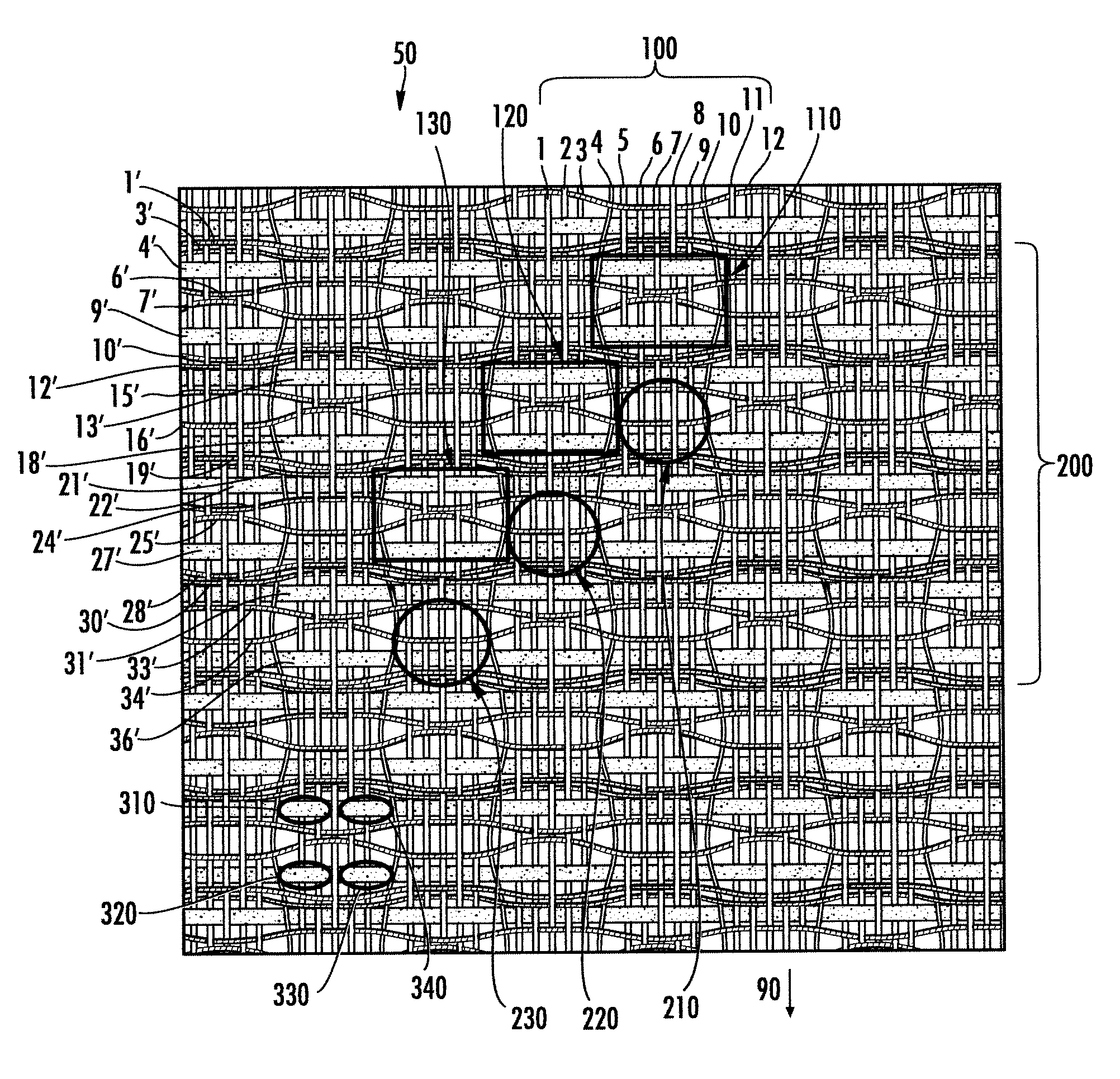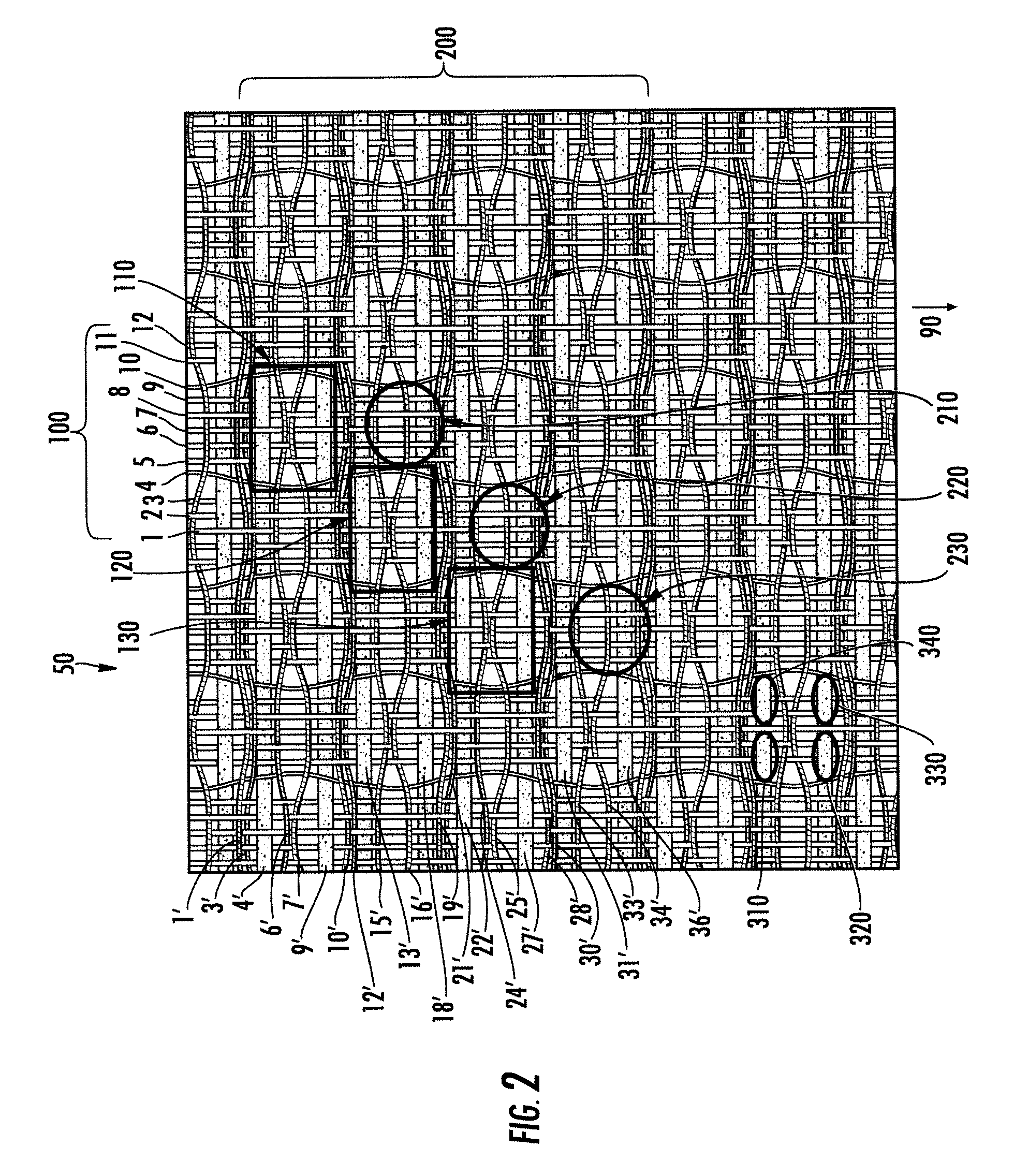Papermaker's fabric to develop caliper and topography in paper products
a technology of fabric and paper products, applied in the field of papermakers fabrics, can solve the problems of uneven formation and uneven drainage of sheets, and achieve the effect of developing and augmenting caliper, topography and uniformity in paper products formed
- Summary
- Abstract
- Description
- Claims
- Application Information
AI Technical Summary
Benefits of technology
Problems solved by technology
Method used
Image
Examples
Embodiment Construction
[0019]Certain terminology is used in the following description for convenience only and is not considered limiting. Words such as “front”, “back”, “top” and “bottom” designate directions in the drawings to which reference is made. This terminology includes the words specifically noted above, derivatives thereof and words of similar import. Additionally, the terms “a” and “one” are defined as including one or more of the referenced item unless specifically noted.
[0020]The following definitions will also apply to the terms used herein:
[0021]Bulk—the compactness property of a sheet in relation to its weight (whose value decreases as the compactness increases) and is the volume of a unit mass of fiber, typically expressed in grams per cubic centimeter (g / cc). In paper mills, it is measured as the thickness of a pile of a specified number of sheets under a specified pressure. (paraphrased from: Lavigne, John R. Pulp &Paper Dictionary. San Francisco, Calif.: Miller Freeman, 1986, pp. 120)...
PUM
 Login to View More
Login to View More Abstract
Description
Claims
Application Information
 Login to View More
Login to View More - R&D
- Intellectual Property
- Life Sciences
- Materials
- Tech Scout
- Unparalleled Data Quality
- Higher Quality Content
- 60% Fewer Hallucinations
Browse by: Latest US Patents, China's latest patents, Technical Efficacy Thesaurus, Application Domain, Technology Topic, Popular Technical Reports.
© 2025 PatSnap. All rights reserved.Legal|Privacy policy|Modern Slavery Act Transparency Statement|Sitemap|About US| Contact US: help@patsnap.com



